This article has been reviewed according to Science X's editorial process and policies. Editors have highlighted the following attributes while ensuring the content's credibility:
fact-checked
peer-reviewed publication
trusted source
proofread
First prehistoric person with Turner syndrome identified from ancient DNA
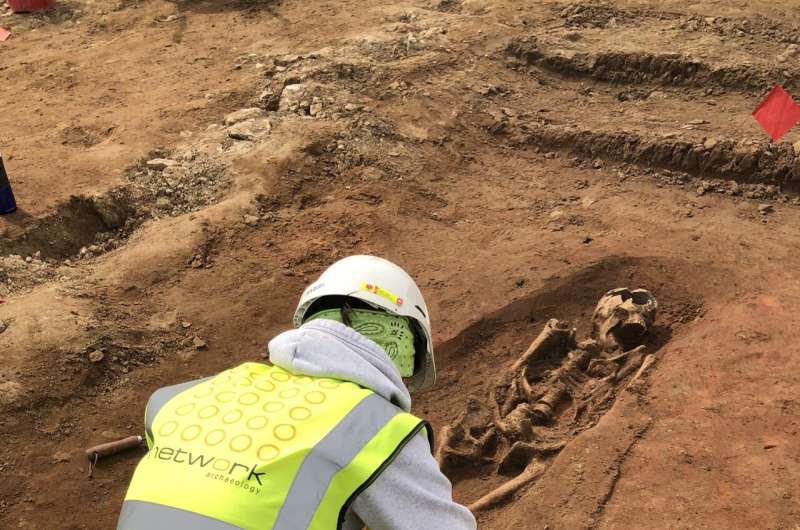
Researchers at the Francis Crick Institute, working with University of Oxford, University of York and Oxford Archaeology, have developed a new technique to measure the number of chromosomes in ancient genomes more precisely, using it to identify the first prehistoric person with mosaic Turner syndrome (characterized by one X chromosome instead of two [XX]), who lived about 2,500 years ago.
As part of their research published in Communications Biology, they also identified the earliest known person with Jacob's syndrome (characterized by an extra Y chromosome—XYY) in the Early Medieval Period, three people with Klinefelter syndrome (characterized by an extra X chromosome—XXY) across a range of time periods, and an infant with Down Syndrome from the Iron Age.
Most cells in the human body have 23 pairs of DNA molecules called chromosomes, and the sex chromosomes are typically XX (female) or XY (male), although there are differences in sexual development. Aneuploidy occurs when a person's cells have an extra or missing chromosome. If this occurs in the sex chromosomes, a few differences like delayed development or changes in height can be seen around puberty.
Ancient DNA samples can erode over time and can be contaminated by DNA from other ancient samples or from people handling them. This makes it difficult to accurately capture differences in the number of sex chromosomes.
-
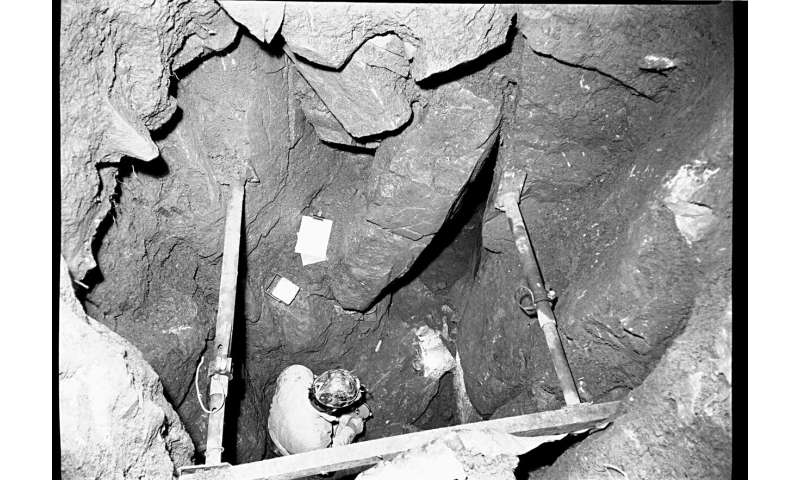
The shaft at the top of the Iron Age deposits (Tony Audsley), where the individual with Turner syndrome was found. Credit: Tony Audsley -
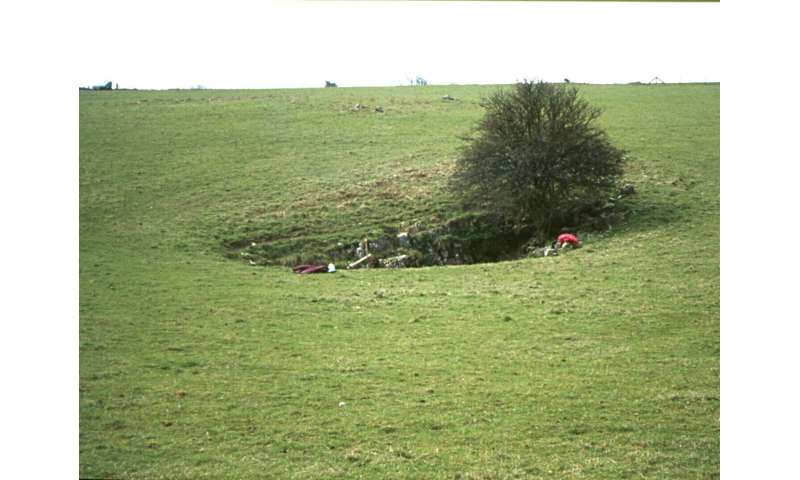
A general view of the Charterhouse Warren site in 1972 (Tony Audsley), where the individual with Turner syndrome was found. Credit: Tony Audsley
The team at the Crick developed a computational method that aims to pick up more variation in sex chromosomes. For the sex chromosomes, it involves counting the number of copies of X and Y chromosomes, and comparing the outcome to a predicted baseline (what you would expect to see).
The team used the new method to analyze ancient DNA from a large dataset of individuals collected as part of their Thousand Ancient British Genomes project across British history, identifying six individuals with aneuploidies across five sites in Somerset, Yorkshire, Oxford and Lincoln (two sites). The individuals lived across a range of time periods, from the Iron Age (2,500 years ago) up to the Post-Medieval Period (about 250 years ago).
They identified five people who had sex chromosomes that fell outside the XX or XY categories. All were buried according to their society's customs, although no possessions were found with them to shed more light on their lives.
The three individuals with Klinefelter syndrome lived across very different time periods, but they shared some similarities—all were slightly taller than average and showed signs of delayed development in puberty.
-
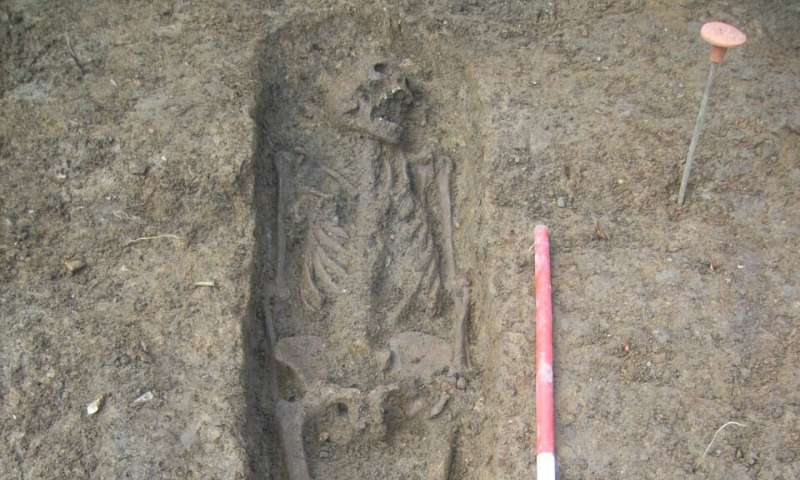
The Medieval Cemetery under Longwall Quad, Magdalen College. Skeleton 4205 as excavated. (Oxford Archaeology). Credit: Oxford Archaeology -
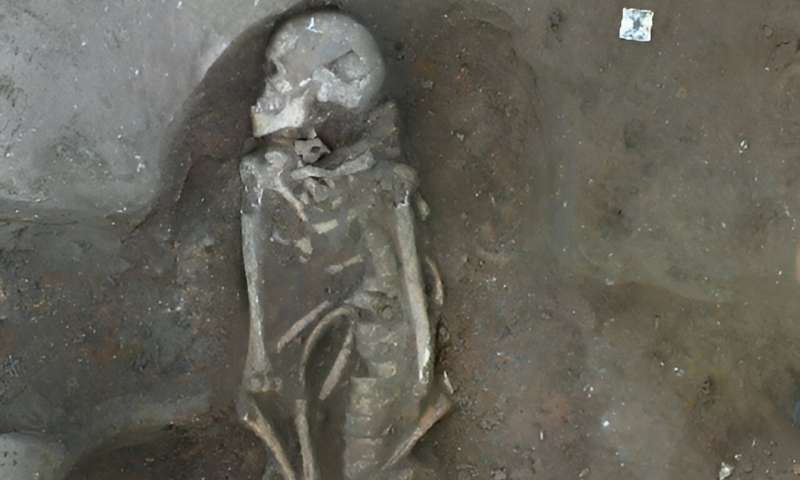
Skeleton with Jacob's syndrome (Network Archaeology). Credit: Network Archaeology
By investigating details on the bones, the research team could see that it was unlikely that the individual with Turner syndrome had gone through puberty and started menstruation, despite their estimated age of 18-22. Their syndrome was shown to be mosaic; some cells had one copy of chromosome X and some had two.
Kakia Anastasiadou, Ph.D. student in the Ancient Genomics Laboratory at the Crick, and first author of the study, said, "Through precisely measuring sex chromosomes, we were able to show the first prehistoric evidence of Turner syndrome 2,500 years ago, and the earliest known incidence of Jacob's syndrome around 1,200 years ago. It's hard to see a full picture of how these individuals lived and interacted with their society, as they weren't found with possessions or in unusual graves, but it can allow some insight into how perceptions of gender identity have evolved over time."
Pontus Skoglund, Group Leader of the Ancient Genomics Laboratory at the Crick, said, "Our method is also able to classify DNA contamination in many cases, and can help to analyze incomplete ancient DNA, so it could be applied to archaeological remains which have been difficult to analyze.
"Combining this data with burial context and possessions can allow for a historical perspective of how sex, gender and diversity were perceived in past societies. I hope this type of approach will be applied as the common resource of ancient DNA data continues to grow."
-
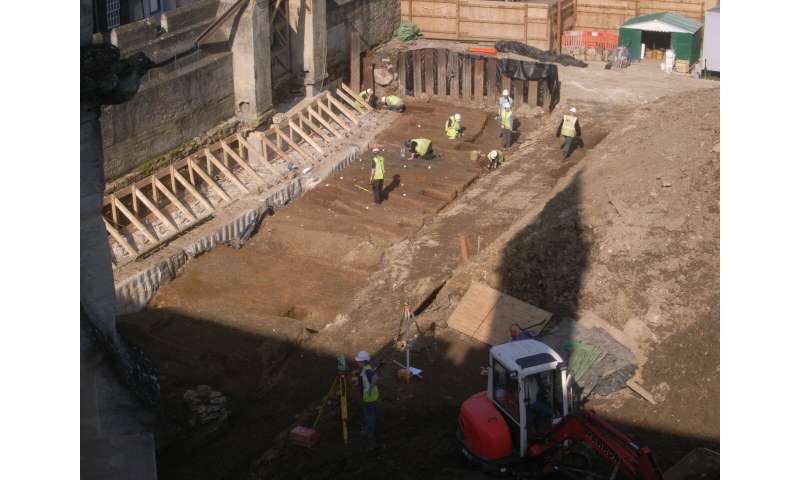
General view of the medieval cemetery in Longwall Quad, Magdalen College under excavation (where an individual with Klinefelter syndrome was found). View to North from top of Magdalen College library (Oxford Archaeology). Credit: Oxford Archaeology -
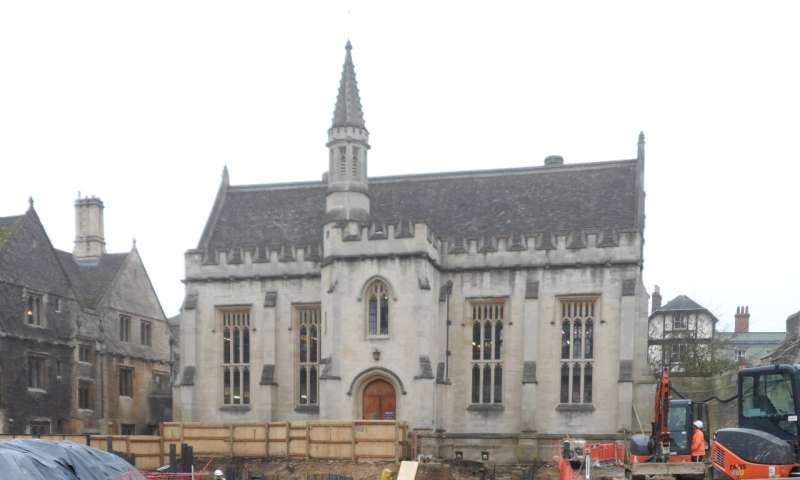
General view of the medieval cemetery in Longwall Quad, Magdalen College under excavation. View to south with Magdalen College library in background (Oxford Archaeology). Credit: Oxford Archaeology
The team worked with archaeologists from the University of Oxford, the Wells and Mendip Museum, University of York, University of Bradford, Oxford Archaeology, York Osteoarchaeology and Network Archaeology.
Rick Schulting, Professor of Scientific and Prehistoric Archaeology at the University of Oxford, said, "The results of this study open up exciting new possibilities for the study of sex in the past, moving beyond binary categories in a way that would be impossible without the advances being made in ancient DNA analysis."
More information: Detection of chromosomal aneuploidy in ancient genomes., Communications Biology (2024). DOI: 10.1038/s42003-023-05642-z
Journal information: Communications Biology
Provided by The Francis Crick Institute



















